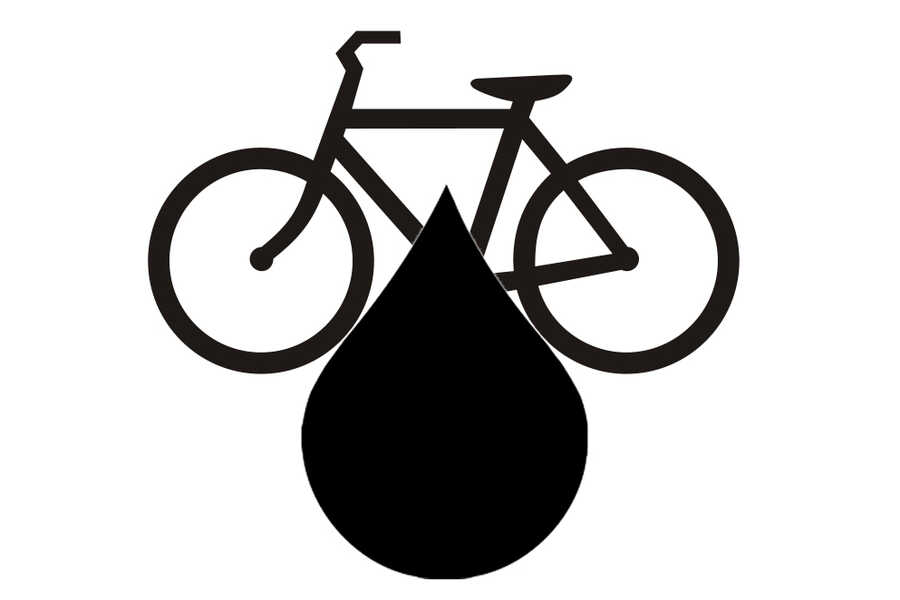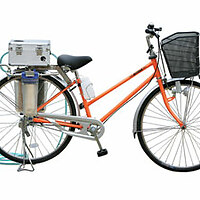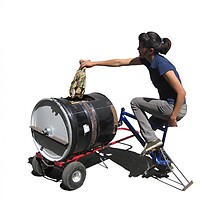Bicycle is the world’s most efficient transport device. However, if we consider with another point of view, the bicycle is a cheap, easy and sustainable power supply for myriad products.
Here, I am presenting two practical, creative and innovative ways that bicycle can be used related to water mainly in the developing countries.
1. Mobile Filtration Vehicle
One billion people in the world don’t have access in clean water. Waterborne disease is a leading killer of children under age five worldwide. Often water sources are distant and people must spend hours and effort just to meet the basic needs of their families by walking for more than 3 miles. Travelling this distance, they may use motors or trucks consuming fuels and polluting the air. Moreover, this water is usually polluted and they must boil it in order to clean it. Finally, another problem is the water storage areas. Mainly they use open containers, which are prone to contamination.
The solution is the combination the world most efficient transportation device with a water filter. Two example of this kind of vehicle are the Aquaduct and the Cyclo Clean (Nippon Basic Co). They are pedal powered vehicles that transport, filter, and store water for the developing world.
This tricycle vehicle provides enough water for an entire family by also cleaning it in one trip. It can filter three tons of water in 10 hours. The mobile filtration vehicle consists of two storage tanks (the large tank and the clean tank), a filter, a peristaltic tank and a clutch. Firstly, the large tank is filled with water from the water source. As the rider pedals the peristaltic pump attached to the pedal crank draws water from a large tank, through a filter, to a smaller clean tank. Then the clean tank is removed and the clean water is stored their. A clutch engages and disengages the drive belt from the pedal crank, enabling the rider to filter the water while traveling or while stationary if more water is needed.
In this way people in developing countries can have daily access in clean water.
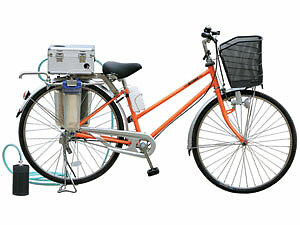
http://theaquaduct.blogspot.com/
http://www.nipponbasic.ecnet.jp/cc.html
2. Spin cycle: a new kind of washer
In the developing world, washing laundry is a difficult, time-consuming task that falls solely on women. Sometimes electricity is unreliable or unavailable and water must be carried by hand, so conventional modern washing machines are not an option. So, mothers and daughters typically spend 8 hours each week scrubbing each piece of their family’s clothing and wringing out the harsh washing solution by hand. Moreover, doing laundry in open streams or lakes can add to water pollution, so the availability of a human-powered washing machine could make a big difference to the quality of life.
The invention is the Bicilavadora from students of the MIT University is a low cost, pedal-powered washing machine that is designed around readily available parts. Its innovation is its simple design and its use of inexpensive plastic barrels and bicycle components. The Bicilavadora is reliable, easy to operate and uses no electricity. The parts are available locally, so Bicilavadoras can be manufactured and repaired in the community without depending on imported goods.
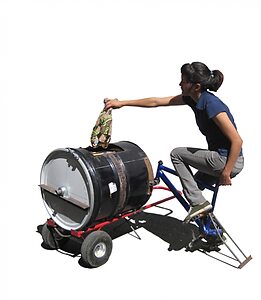
http://newsoffice.mit.edu/2009/itw-bicilavadora-0219
Bicycle + Water = ?
? = Clean Water, Sanitation, Health, Save Energy
E.G

